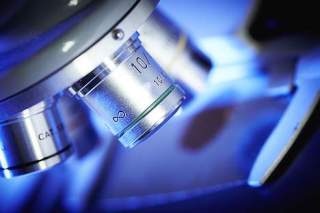Jun 13 2019
Artificial intelligence (AI) is better than humans when diagnosis of pigmented skin lesions is concerned. In a study carried out under the direction of the Medical University of Vienna human specialists "competed" against computer algorithms. The algorithms accomplished visibly better results, yet their present abilities cannot take the place of humans. The results were reported in the journal “The Lancet Oncology”.
 (Image credit: Medical University of Vienna)
(Image credit: Medical University of Vienna)
The International Skin Imaging Collaboration (ISIC) and the Medical University of Vienna arranged an international challenge to match the diagnostic skills of 511 physicians with 139 computer algorithms (from 77 diverse machine learning labs). A database of over 10.000 images, which was set up by the team under Harald Kittler at the Department of Dermatology (Medical University of Vienna) in partnership with the University of Queensland (Australia), was used as a training set for the machines. This database comprised of benign (moles, angiomas senile warts, sun spots, and dermatofibromas) and malignant pigmented lesions (basal cell carcinoma, melanomas, and pigmented squamous cell carcinoma).
Each participant had to diagnose 30 casually chosen images out of a test-packet of 1511 images. The result was unmistakable. While the best humans diagnosed 18.8 out of 30 cases accurately, the best machines accomplished 25.4 correct diagnoses. This did not amaze first-author Philipp Tschandl from the Medical University of Vienna: "Two thirds of all participating machines were better than humans; this result had been evident in similar trials during the past years."
Not a substitute for human beings
Even though the algorithms were obviously superior in this experiment, it does not mean that the machines will fill in for humans in skin cancer diagnosis.
The computer only analyzes an optical snapshot and is really good at it. In real life, however, the diagnosis is a complex task. Physicians usually examine the entire patient and not just single lesions. When humans make a diagnosis they also take additional information into account, such as the duration of the disease, whether the patient is at high or low risk, and the age of the patient, which was not provided in this study.
Philipp Tschandl, Study First Author, Medical University of Vienna
Regardless of the remarkable performance of AI, further improvement is needed. The machines were considerably less accurate in the diagnosis of lesions that originated from centers that did not supply training images.
In connection with human performance, experience was crucial. The most skilled participants with a minimum of ten years of experience in the diagnosis of pigmented skin lesions did excellently.